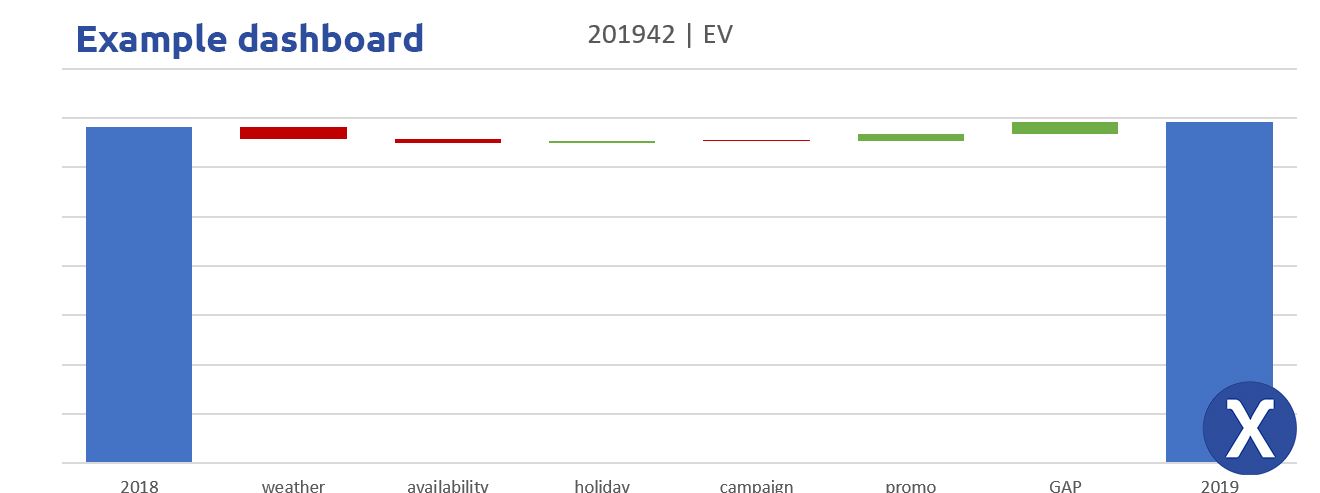HEMA, a Dutch variety store retail chain based in 9 countries, has partnered with Xomnia to develop a dashboard that ensures that the chain’s business decisions are taken in a more data-driven manner.
The dashboard, developed by Xomnia’s Machine Learning Engineer Ilse Lankhorst, shows in real-time the impacts of important drivers on sales. The solution was developed in close collaboration with business stakeholders, making sure that it really adds value to the retailer, now and in the future.
The dashboard that Xomnia built can revolutionize HEMA’s approach to sales forecasting and budgeting, stock management, in-store and online promotions, and performance management.
By delivering a number of state-of-the-art models and implementing our decision-making process, Xomnia made life easier and better for both our customers and HEMA.
Bas Karsemeijer, Head of Data at HEMA
Case
What’s really driving, or stalling, sales? Like many retail stores, HEMA found it challenging to get a clear picture of the motivations behind customer purchases. Category and store managers of the Dutch department store were still drawing on topline KPI’s, their own intuition and the weather to make predictions or explanations. With 760 stores in nine countries, HEMA needed more precise insights into the sales drivers to make data-driven decisions on stock availability, campaigns and promotions.
To determine what drives the sales, HEMA developed with Xomnia an ensemble machine learning model that analyzes included data about HEMA’s transactions, stores, customers, promotions, stock and even the weather and holidays for separate product categories and different sales channels. This application delivers scores that are shown via a dashboard, which allows real-time tracking of actual sales volumes versus budget and predictions. A visualized sales bridge quantifies the financial impact per variable. For instance, the dashboard shows the sales of last week compared to last year, allowing to see for both weeks how drivers like promotions contributed to these sales numbers.
Solution
The application is written in Python and created for different models and different levels. For example, there are models specified for each product category in HEMA, and models for each channel (online channels are divided into home delivery and click & collect, and offline channels between franchises and owned stores). While most of the features and data for those models are the same, there are slight differences. For example, offline shops come in various sizes, but the online store has only one size.
Xomnia used models on different levels to view the influence of features across the different circumstances. An example of this is that the weather has a much greater impact on online sales than on offline sales. Data about the weather was collected using an API from nearly 30 weather stations and linked to the nearest stores. Then, we created additional features based on the data. Extreme weather is assumed if the wind speed is high, the temperature is above 25 Celsius or below 0 Celsius, snowy weather, etc. Because the weather can make a big impact on fashion choices, the model accounts for the first hot day, cold day of the season as a feature. We also added holiday data, including school holidays linked to the stores by school holiday region.
XGboost (Extreme Gradient Boosting) is used for the model. With XGboost, the model can take into account the influence of the features on each other. For example, a sunny day with a 25 degree temperature is different than a sunny day of 5 degrees.
Impact
HEMA’s management and specialists now have the tools to visualize and decipher the true impact of many internal and external, controllable and uncontrollable factors per product group, per store, per day.

Knowledge on this granular level reveals that a promotion with a huge value for the men and kids departments may also deteriorate the margin on food. It can also show that, while rain has a negative impact on the general sales trends, some products like raincoats or even lingerie may benefit from a downpour.
Furthermore, collaboration between the business and development teams ensures that the model continues to leverage the company’s success through whatever events come their way – weather-related or otherwise.
“This communication is key because the financial, ecommerce, marketing and other sales teams must all be able to understand and explain how the model works” explains Ilse, a Xomnia junior Data Scientist on the HEMA project. “It is not enough to develop a tool and then walk away. We are sitting together every week to fine-tune the model and to keep making it better.”


